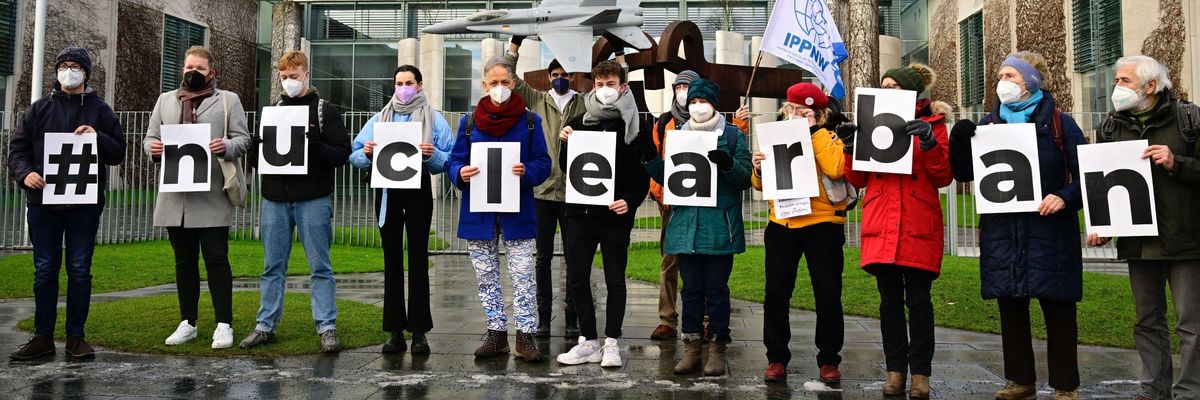Seventy-eight years ago the global arms race was ignited with the development and use of the first atomic bombs that were dropped over the cities of Hiroshima and Nagasaki. In a flash, mankind had perfected the means of destroying all life.
From that moment to the present day, medical science has grappled with the devastating medical and humanitarian consequences of nuclear war. From the unique and lasting injuries of atomic weapons caused by radionuclide exposure to the universal injuries caused by massive burns, to the discovery of strontium-90 in human baby teeth resulting from atmospheric testing, and ultimately working with climate scientists to reveal the most dangerous effects of catastrophic climate change that would follow even a limited regional nuclear war, the medical community has fought for the elimination of these weapons.
In a world threatened by climate change, which in and of itself makes nuclear war more probable with competition over dwindling natural resources across the planet, the continued existence of around 12,500 of these weapons is untenable. Nuclear war, either by intent, miscalculation, mistake, or cyber attack, is an ever more real possibility. These facts resulted in the Bulletin of Atomic Scientists moving their infamous Doomsday Clock, representing nuclear apocalypse, to 90 seconds to midnight this year.
“The nuclear armed states must eliminate their nuclear arsenals before they eliminate us.”
This daunting reality, while overwhelming, can and is providing an opportunity for individuals, nations, NGO’s, and civil society across the planet to become aware and mobilize given the real possibility that these weapons can, and must, be abolished. Internationally, the International Campaign to Abolish Nuclear Weapons, ICAN, is working for all remaining nations to ratify the U.N. Treaty on the Prohibition of Nuclear Weapons. Simultaneously, civil society is working in the nuclear states to build support for the elimination of these weapons. In the United States, the grassroots Back from the Brink movement continues to gain momentum and build support for the abolition of these weapons and the precautionary measures necessary until that goal is realized. This effort has resulted in H. Res 77 sponsored by Rep. James McGovern (D-Mass.), and currently has 36 cosponsors in Congress.
For the past eight decades, the medical community has worked to raise awareness without inciting paralysis, or a sense of futility, about the risks of these weapons. This month in an unprecedented move, over 100 international medical journals came together in a joint editorial realizing the urgency of the moment to heed the message of doctors the world over by stating, “We call on health professionals to alert the public and our leaders to this major danger to public health and the essential life support systems of the planet—and urge action to prevent it.”
Furthermore, they endorsed critical components of the Back from the Brink movement in saying
We now call on health professional associations to inform their members worldwide about the threat to human survival and to join with the International Physicians for the Prevention of Nuclear War (IPPNW) to support efforts to reduce the near term risks of nuclear war, including three immediate steps on the part of nuclear armed states and their allies: First, adopt a no first use policy; second, take their nuclear weapons off hair trigger alert; and, third, urge all states involved in current conflicts to pledge publicly and unequivocally that they will not use nuclear weapons in these conflicts. We further ask them to work for a definitive end to the nuclear threat by supporting the urgent commencement of negotiations among the nuclear armed states for a verifiable, timebound agreement to eliminate their nuclear weapons in accordance with commitments in the non-proliferation treaty, opening the way for all nations to join the Treaty on the Prohibition of Nuclear Weapons.
The editorial continued by stating,
The danger is great and growing. The nuclear armed states must eliminate their nuclear arsenals before they eliminate us. The health community played a decisive part during the Cold War and more recently in the development of the Treaty on the Prohibition of Nuclear Weapons. We must take up this challenge again as an urgent priority, working with renewed energy to reduce the risks of nuclear war and to eliminate nuclear weapons.
As the world observes this 78th anniversary of Hiroshima and Nagasaki, the opportunity and moment is at hand to finally abolish this threat to future generations. This must be our response when our children’s children ask us what we did when our world was threatened. This is our prescription for survival.



